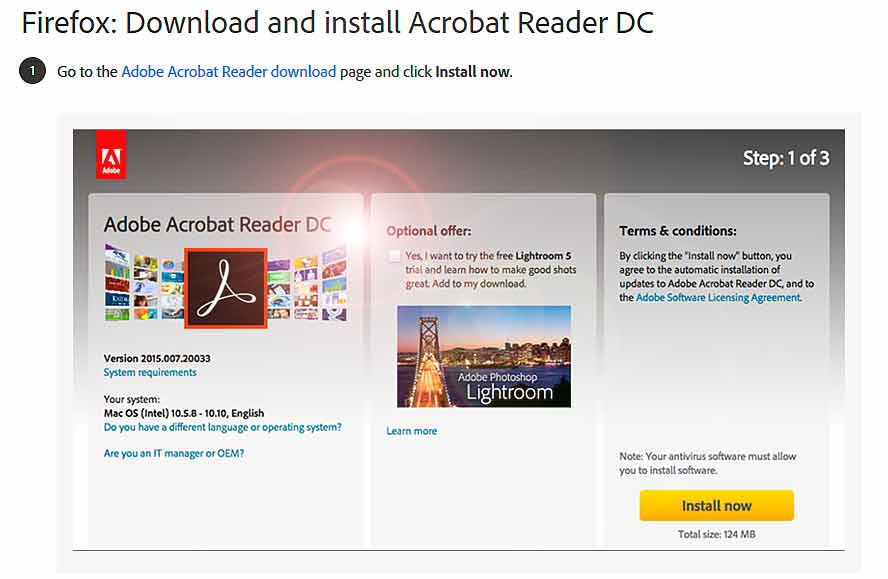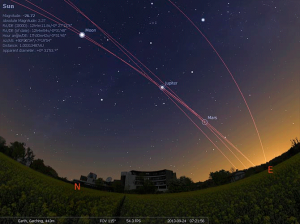Adobe Reader for Mac OS
Adobe’s Portable Document Format is just about everywhere you look nowadays: software manuals, store catalogs, and even IRS tax forms are all available as PDF files. What makes these files so popular is that they’re self-contained documents that retain their original formatting and can be read on a Mac or a PC with the aid of a small, free program called Acrobat Reader.
As of the last knowledge update in January 2024, Adobe Reader has been replaced by Adobe Acrobat Reader DC. Adobe Acrobat Reader DC is the free, trusted standard for viewing, printing, and annotating PDFs (Portable Document Format).

If PDF files seem to be coming at you from every direction, it’s time to get up to speed on how to open, navigate, and extract data from them as quickly and easily as possible–and that means tapping into some of the surprisingly powerful but easy-to-miss features lurking in Acrobat Reader.
Speed Reading
Reader is designed for fast, easy document viewing. To really speed through documents with a minimum of clicking and scrolling, however, bypass the Reader tool bar and use some shortcuts.
- Move from page to page by using the page up and page down keys or the arrow keys (right and down move you forward; left and up move you backward). To jump to a specific page, press command-5, type in the page number, and press return.
- To scroll vertically within a page, hold down the shift key while using the arrow keys; to scroll horizontally, press shift-left arrow and shift-right arrow.
- To see more of your document at once, press command-shift-B to hide the Reader tool bar and command-shift-M to hide the menu bar. The same keystrokes make those items reappear.
One-Shot Text Grabbing
Often you’ll want to convert the content of a PDF file into plain text that you can paste into another document. To grab a specific chunk of text, you use the Select Text tool (press command-option-4) and then drag over the text. But if you want to grab all the text in a document, you can bypass the Select Text tool–just press command-A to select all the text in one shot and then command-C to grab every word in the document.
To confirm that you have indeed copied everything you intended before switching to another application to paste it, use Reader’s Show Clipboard command in the Window menu to get a preview of the selected text or graphics.
Turn Pages into Pictures
You can also turn an entire page of a PDF file–including all the text and graphics–into a single image that can be copied and pasted into another document. Press command-option-5, to switch to the Select Graphics tool; command-A, to select the entire page as one giant graphic; and command-C, to copy it–and then switch to another application to paste the page.
Reader as PowerPoint
If you think Reader is nothing more than a bare-bones document viewer for reading online manuals, you obviously haven’t tried the mind-blowing presentation features that essentially turn it into a tiny, free version of Microsoft PowerPoint. Yes, Reader is the world’s least-expensive slide-presentation program.
When you open a PDF file with Reader and press command-shift-L, the page instantly fills every inch of your screen–no windows, no menu bar–just like a slide-presentation program. Amazingly, even in this full-screen mode, you can still move from page to page (by using the up and down arrow keys or by pressing command-5 to jump to a specific page) and zoom in and out (press command-L and then choose a level of magnification). To jump back into normal-screen mode, just press the escape key.
It gets better. Choose Full Screen from the Preferences submenu in Reader File menu, and you’re given a whole array of presentation options. You can have Reader advance from page to page automatically at any interval between 1 and 60 seconds or have it wait until you click the mouse. You can make a presentation loop. You can choose to make the cursor visible during a slide show or keep it hidden. You can select virtually any background color and pick from among 18 transitional effects, so you can have one slide dissolve, wipe, glitter, or split into the next. And let’s not forget about anti-aliased text; not even PowerPoint can make text look as good on a slide. (To have Reader antialiasing the text, turn on the Smooth Text And Monochrome Images option in the General Preferences dialog box.)
Yes, Reader lacks builds, background templates, and animation. But think about what it does offer: if you have Acrobat, you can build a presentation in virtually any program; distill it into a PDF file; and head out on the road, knowing that you’ll be able to present it on any Mac or PC you encounter, using a free program that just about everyone on earth has installed.
Category: Office
Version: DC 2019.021.20047
Download Size: 201 MB
License: Free to try
Release Date: October 24, 2019
Last Updated: October 21, 2022
System requirements: Mac OS X 10.14 or later

